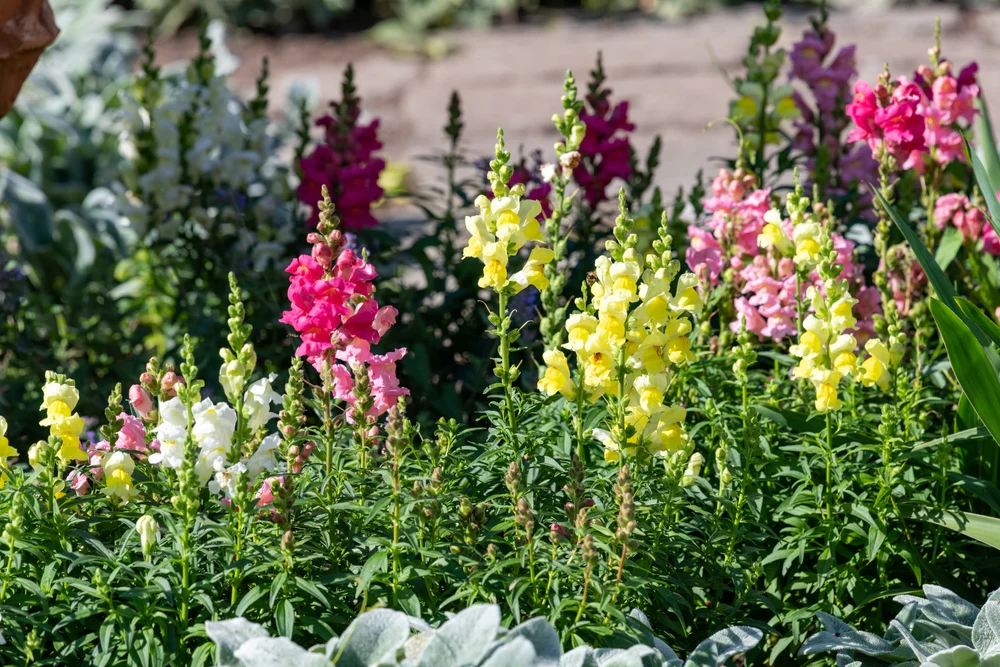Snapdragons (Antirrhinum majus) are one of the most delightful and nostalgic flowers you can grow in your garden. Known for their distinctive, dragon-shaped blooms that open and close when gently squeezed, these cheerful plants add charm and vibrant color to garden beds, borders, and containers. Available in a rainbow of hues — from soft pastels to fiery reds and deep purples — snapdragons bloom profusely in cool weather, making them garden favorites in both spring and fall.
While snapdragons are relatively easy to care for, one of the most important aspects of keeping them healthy and blooming is proper watering. If you’ve ever wondered how often should you water a snapdragon?, this comprehensive guide will provide detailed insights into their moisture needs, watering schedules by season, and care tips to help your snapdragons thrive.
Understanding a Snapdragon’s Watering Needs

Snapdragons are native to the rocky slopes of southern Europe and the Mediterranean region, where they evolved in areas with well-draining soil and moderate rainfall. Though they are adaptable and somewhat drought-tolerant once mature, snapdragons still need consistent moisture, especially during their growing and blooming periods.
The key to watering snapdragons is to keep the soil evenly moist — not soggy, and never bone dry. Overwatering can lead to root rot and fungal diseases, while underwatering can result in wilting, stunted growth, and fewer flowers.
How Often Should You Water a Snapdragon?

General Watering Guidelines:
- Newly Planted Snapdragons: Water daily for the first week after planting.
- Established In-Ground Snapdragons: Water every 2–3 days in warm, dry weather, and once a week in cooler or rainy conditions.
- Container Snapdragons: Water every day or every other day, depending on weather conditions and pot size.
Rule of Thumb: Always check the top 1–2 inches of soil — if it feels dry, it’s time to water.
Seasonal Watering Schedule for Snapdragons

Spring (Planting and Early Growth)
Snapdragons are cool-season flowers typically planted in early to mid-spring.
- New Transplants: Water daily for the first week to help establish strong roots.
- Young Plants: Reduce to every 2–3 days as roots develop, keeping the soil evenly moist.
Summer (Warm Weather Care)
In many regions, snapdragons slow down during the hottest part of summer but still need moisture to survive.
- In-Ground Snapdragons: Water 2–3 times a week, or daily during heatwaves.
- Container Snapdragons: Water every day, and sometimes twice daily in extreme heat.
- Use mulch to retain soil moisture and reduce temperature stress around the roots.
Tip: Snapdragons prefer cooler temperatures (60–75°F/15–24°C), so watering early in the morning helps them handle hot days better.
Autumn (Second Bloom and Cool-Season Growth)
Snapdragons often experience a second flush of blooms in fall as temperatures cool.
- Maintain watering at every 2–3 days in dry conditions.
- Cut back slightly if rainfall is regular.
Winter
In mild-winter climates where snapdragons overwinter as short-lived perennials:
- Water once every 7–10 days if rainfall is scarce.
In colder regions, snapdragons are typically grown as annuals and no watering is needed after frost kills the plant.
Factors That Affect Snapdragon Watering Frequency

Several factors influence how often snapdragons need watering:
Climate and Weather
- Hot, dry, and windy weather: Increases evaporation and requires more frequent watering.
- Cool, cloudy, or rainy weather: Reduces the need for supplemental water.
Soil Type
- Sandy soil: Drains quickly and requires more frequent watering.
- Clay soil: Retains moisture longer but risks waterlogging.
- Loamy soil: Ideal for snapdragons, offering good drainage and moisture retention.
Plant Maturity
- Young plants: Have shallow roots and need consistent moisture.
- Mature plants: Develop deeper roots and can handle short dry spells better.
Container Size and Material
- Smaller pots and unglazed terracotta containers dry out faster.
- Larger or glazed ceramic pots retain moisture longer.
How to Properly Water a Snapdragon Water Deeply and Evenly

Water should reach 6–8 inches deep into the soil to encourage deep, strong root systems. Avoid shallow watering, which promotes weak, surface-level roots.
Check Soil Moisture Before Watering
Insert your finger 1–2 inches into the soil. If it feels dry at that depth, it’s time to water.
Water at the Base
Direct water at the base of the plant rather than overhead to prevent wet foliage, which can encourage powdery mildew and rust.
Use Mulch
A 1–2 inch layer of organic mulch helps retain soil moisture, regulate soil temperature, and suppress weeds.
Signs of Overwatering and Underwatering in Snapdragons
Recognizing early symptoms of water stress helps you adjust care before the plant suffers lasting damage.
Signs of Overwatering:
- Yellowing leaves, starting from the bottom
- Wilting, even though the soil feels wet
- Soft, mushy stems
- Root rot
- Fungal diseases like powdery mildew
Solution: Improve drainage, reduce watering, and remove affected plant parts.
Signs of Underwatering:
- Drooping or wilting leaves, especially midday
- Dry, brittle foliage
- Brown, crispy leaf edges
- Stunted growth
- Few or small flowers
Solution: Water deeply and increase frequency, especially during hot weather.
Special Watering Tips for Potted Snapdragons
Container-grown snapdragons dry out more quickly than in-ground plants:
- Use light, well-draining potting mix.
- Ensure containers have ample drainage holes.
- Check soil moisture daily, especially in summer.
- Water until it drains from the bottom of the pot.
- Avoid letting water sit in saucers.
Additional Snapdragon Care Tips
To help your snapdragons thrive alongside consistent watering:
Provide Full Sun
Snapdragons need at least 6 hours of direct sunlight daily for optimal blooms.
Deadhead Regularly
Removing spent flowers encourages continuous blooming and keeps plants tidy.
Fertilize Lightly
Feed snapdragons every 4–6 weeks during the growing season with a balanced, water-soluble fertilizer.
Watch for Pests
Aphids and spider mites may appear, especially in dry weather. Treat with insecticidal soap or neem oil.
Conclusion
So, how often should you water a snapdragon?
It depends on factors like plant age, local climate, soil type, and whether they’re in the ground or containers:
- Newly planted snapdragons: Water daily for the first week.
- Established in-ground snapdragons: Water every 2–3 days, or more during heatwaves.
- Potted snapdragons: Water daily in warm weather and monitor soil moisture regularly.
The secret is to keep soil evenly moist but never soggy, adjusting your routine to match the seasons and plant growth stage. With consistent watering, bright light, and a bit of regular care, your snapdragons will fill your garden with color and charm from early spring through fall.




Leave A Comment